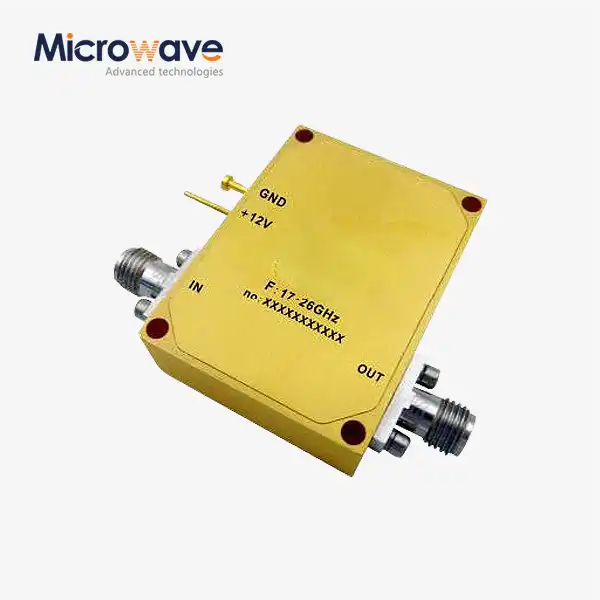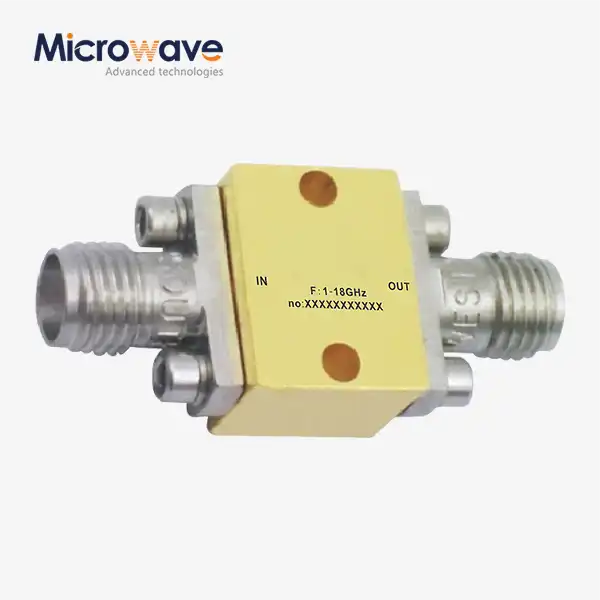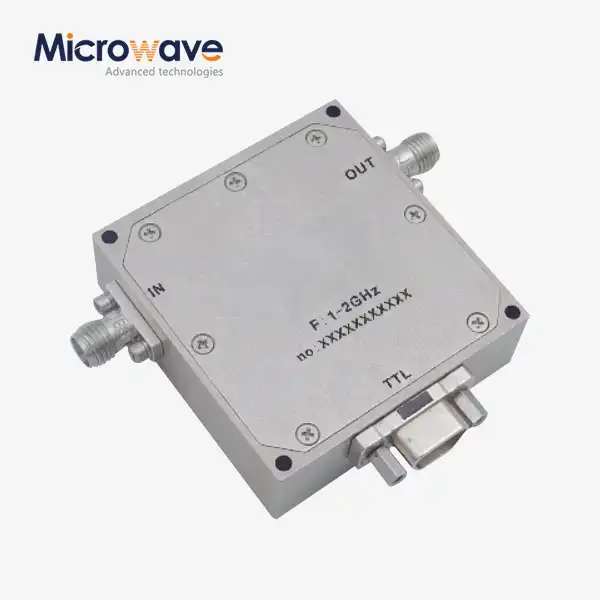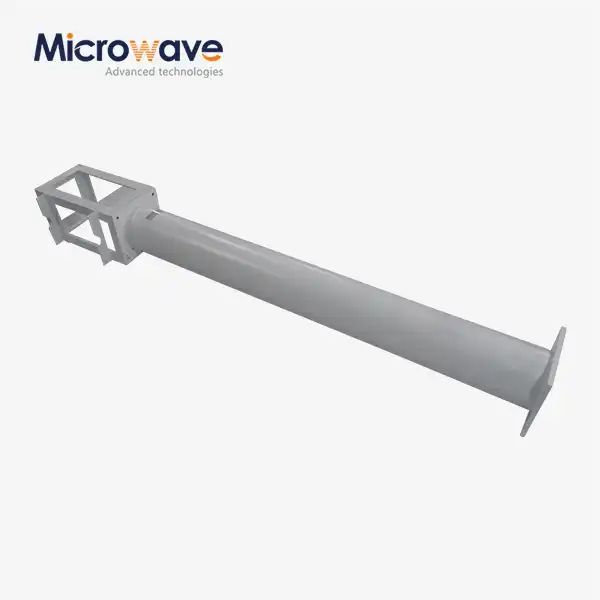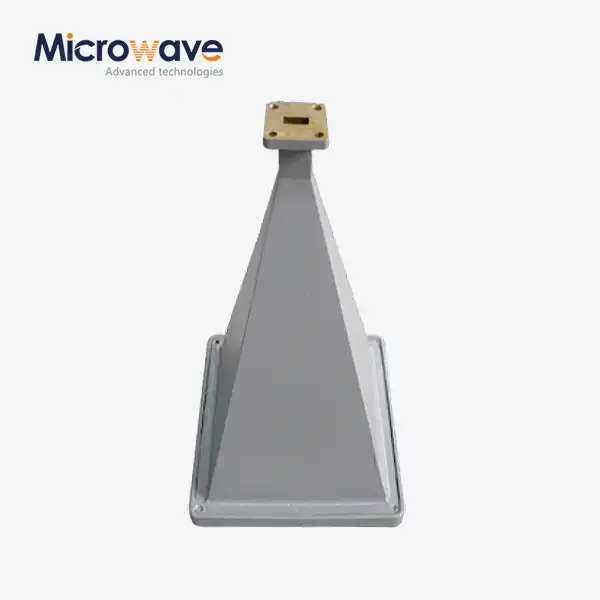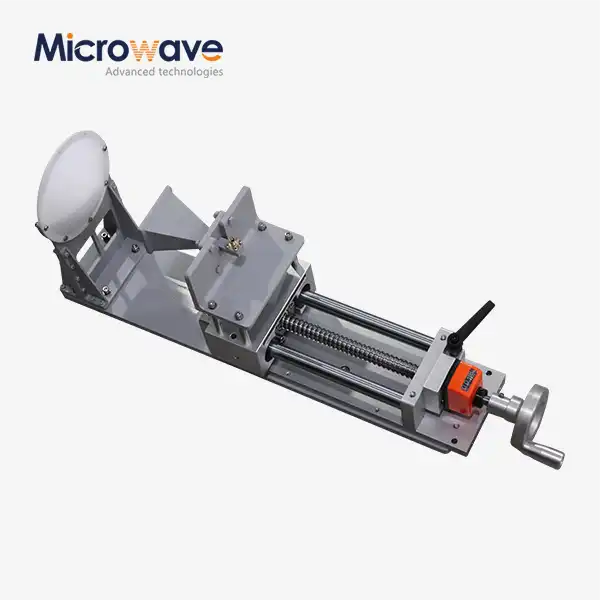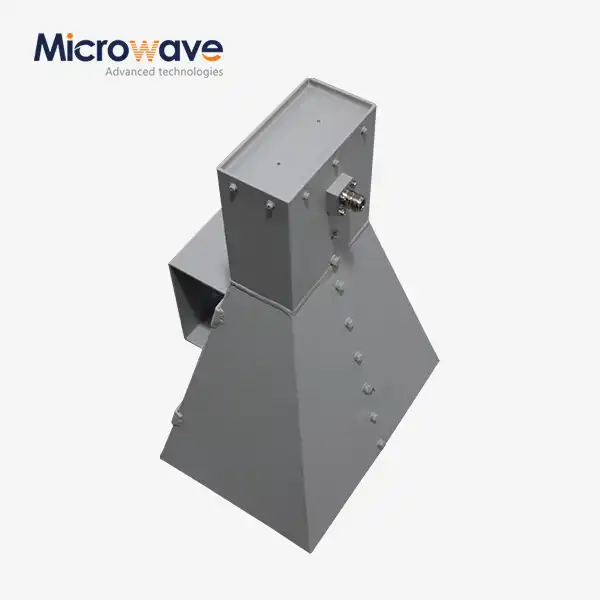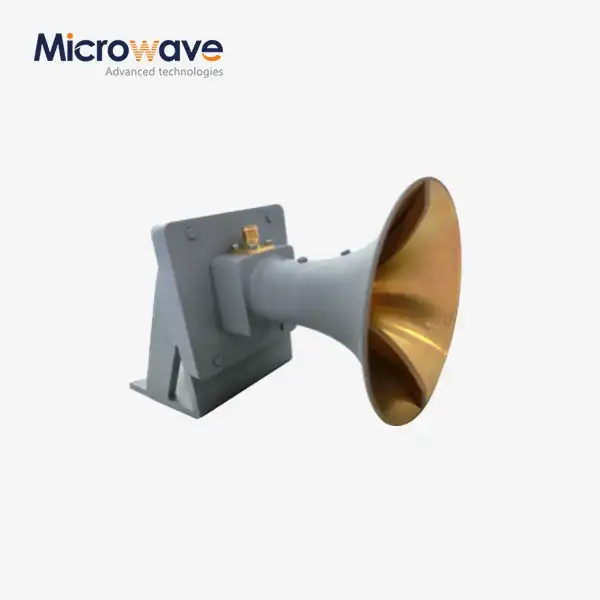How does the four-ridged structure of an Open Boundary Dual Linear Polarization Four Ridged Horn Antenna ensure stable performance?
The four-ridged structure of an Open Boundary Dual Linear Polarization Four Ridged Horn Antenna fundamentally transforms electromagnetic wave propagation through precision-engineered geometry that creates stable impedance matching across wide frequency ranges. This innovative design incorporates four symmetrically positioned ridges within the horn structure, which effectively control the electric field distribution and minimize cross-polarization interference. The Open Boundary Dual Linear Polarization Four Ridged Horn Antenna achieves superior performance stability through its unique ridge configuration that maintains consistent radiation patterns while extending operational bandwidth toward lower frequencies, making it an essential component for modern communication and radar systems.
Enhanced Electromagnetic Field Control Through Four-Ridge Architecture
Ridge Geometry and Field Distribution Optimization
The four-ridged structure of the Open Boundary Dual Linear Polarization Four Ridged Horn Antenna creates a controlled electromagnetic environment through precise geometric manipulation of the waveguide interior. Each ridge functions as an electromagnetic boundary that shapes the electric field distribution, preventing unwanted mode propagation and ensuring single-mode operation across the antenna's operational bandwidth. The symmetrical placement of these ridges creates a balanced field pattern that maintains consistent impedance characteristics, crucial for stable antenna performance. Advanced Microwave Technologies Co., Ltd incorporates cutting-edge design principles in manufacturing the Open Boundary Dual Linear Polarization Four Ridged Horn Antenna, utilizing their 24m Microwave Darkroom facility to validate field distribution patterns with exceptional precision. The ridge dimensions are carefully calculated to achieve optimal field concentration while minimizing reflections at the antenna aperture, resulting in improved radiation efficiency and reduced standing wave ratios across the entire operational frequency range.
Impedance Matching and Bandwidth Extension
The four-ridge configuration serves as a sophisticated impedance transformation network within the Open Boundary Dual Linear Polarization Four Ridged Horn Antenna, gradually transitioning from the input waveguide impedance to free-space impedance. This gradual transformation significantly reduces reflection coefficients and improves the voltage standing wave ratio (VSWR) across wide frequency bands. The ridge structure creates multiple electromagnetic paths that contribute to bandwidth extension, particularly toward lower frequencies where traditional horn antennas typically experience performance degradation. Advanced Microwave's Open Boundary Dual Linear Polarization Four Ridged Horn Antenna demonstrates exceptional impedance matching capabilities, with the ridge geometry optimized through electromagnetic simulation and validated using their advanced measurement equipment capable of frequencies up to 110 GHz. The resulting bandwidth enhancement makes this antenna suitable for applications requiring operation across multiple frequency bands, from satellite communications to advanced radar systems.
Cross-Polarization Suppression and Signal Integrity
The symmetrical four-ridge design inherently suppresses cross-polarization components that can degrade signal quality in dual-polarization applications. Each ridge pair works in conjunction to maintain orthogonal polarization states, ensuring that the Open Boundary Dual Linear Polarization Four Ridged Horn Antenna delivers exceptional polarization purity across its operational bandwidth. This characteristic is particularly crucial for applications requiring simultaneous transmission and reception of orthogonal polarization states, such as satellite communication systems and weather radar installations. The ridge structure creates controlled boundary conditions that minimize coupling between orthogonal modes, resulting in improved isolation between polarization channels. Advanced Microwave Technologies Co., Ltd leverages their extensive experience in microwave technology to optimize the ridge geometry for maximum cross-polarization suppression, ensuring that the Open Boundary Dual Linear Polarization Four Ridged Horn Antenna meets stringent performance requirements for demanding applications in aerospace, defense, and telecommunications sectors.
Mechanical Stability and Environmental Resilience
Structural Integrity Through Ridge Reinforcement
The four-ridge structure provides significant mechanical advantages beyond its electromagnetic benefits, creating a robust framework that enhances the overall structural integrity of the Open Boundary Dual Linear Polarization Four Ridged Horn Antenna. The ridges act as internal reinforcement elements that distribute mechanical stress evenly throughout the antenna structure, reducing the likelihood of deformation under thermal cycling or mechanical vibration. This enhanced structural stability is particularly important for aerospace and defense applications where antennas must maintain performance under extreme environmental conditions. Advanced Microwave Technologies Co., Ltd constructs the Open Boundary Dual Linear Polarization Four Ridged Horn Antenna using high-quality materials selected for their mechanical properties and electromagnetic compatibility, ensuring long-term reliability in demanding operational environments. The ridge geometry is optimized not only for electromagnetic performance but also for mechanical stability, creating a design that withstands the rigors of field deployment while maintaining consistent electrical characteristics over extended operational periods.
Thermal Management and Frequency Stability
The four-ridge configuration contributes to improved thermal management within the Open Boundary Dual Linear Polarization Four Ridged Horn Antenna by creating additional surface area for heat dissipation and providing structural pathways for thermal conduction. This enhanced thermal management capability helps maintain frequency stability across varying temperature conditions, crucial for applications requiring precise frequency control. The ridge structure creates a more uniform temperature distribution throughout the antenna, reducing thermal gradients that could cause mechanical stress or dimensional changes affecting electromagnetic performance. Advanced Microwave's Open Boundary Dual Linear Polarization Four Ridged Horn Antenna incorporates materials with matched thermal expansion coefficients to minimize temperature-induced performance variations. The company's ISO 14001:2015 environmental management certification ensures that manufacturing processes consider environmental factors, including thermal performance optimization, resulting in antennas that maintain stable operation across wide temperature ranges encountered in satellite communication and radar applications.
Vibration Resistance and Phase Center Stability
The four-ridge structure significantly enhances vibration resistance by creating a stiffer mechanical framework that resists deflection under dynamic loading conditions. This improved mechanical stability directly translates to better phase center stability, a critical parameter for applications requiring precise beam pointing and tracking capabilities. The Open Boundary Dual Linear Polarization Four Ridged Horn Antenna maintains consistent phase center location across its operational bandwidth, even under mechanical stress or vibration. The ridge geometry creates natural damping characteristics that reduce resonant vibrations, preventing performance degradation in mobile or shipboard installations. Advanced Microwave Technologies Co., Ltd applies rigorous quality control procedures aligned with ISO 9001:2015 standards to ensure that each Open Boundary Dual Linear Polarization Four Ridged Horn Antenna meets stringent mechanical specifications. The company's comprehensive testing protocols include vibration testing and environmental conditioning to validate the antenna's ability to maintain stable performance under operational conditions encountered in aerospace, defense, and mobile communication applications.
Performance Optimization Across Diverse Applications
Satellite Communication System Integration
The Open Boundary Dual Linear Polarization Four Ridged Horn Antenna excels in satellite communication applications through its ability to maintain stable performance across the wide frequency bands required for modern satellite systems. The four-ridge structure enables operation across multiple satellite frequency bands while maintaining consistent gain and radiation pattern characteristics essential for reliable satellite links. Advanced Microwave Technologies Co., Ltd designs the Open Boundary Dual Linear Polarization Four Ridged Horn Antenna to meet the stringent requirements of both commercial and military satellite communication systems, providing exceptional signal clarity and transmission efficiency. The antenna's dual linear polarization capability allows for frequency reuse and increased system capacity, critical for modern satellite networks handling high data throughput requirements. The ridge geometry is optimized to provide stable phase center location across frequency, ensuring consistent tracking performance for satellite earth stations and mobile satellite terminals.
Radar System Performance Enhancement
In radar applications, the Open Boundary Dual Linear Polarization Four Ridged Horn Antenna provides superior beamforming capabilities through its four-ridge structure that maintains consistent radiation patterns across wide frequency ranges. The antenna's ability to suppress cross-polarization interference makes it ideal for advanced radar systems requiring high dynamic range and excellent clutter rejection capabilities. Advanced Microwave's Open Boundary Dual Linear Polarization Four Ridged Horn Antenna demonstrates exceptional performance in weather monitoring radar systems, where dual polarization capability enables precipitation classification and improved weather detection accuracy. The stable impedance characteristics provided by the ridge structure ensure consistent radar performance across varying atmospheric conditions, critical for reliable target detection and tracking. The antenna's compact design and high gain characteristics make it suitable for both fixed and mobile radar installations, from air traffic control systems to military surveillance applications.
Aerospace and Defense Applications
The Open Boundary Dual Linear Polarization Four Ridged Horn Antenna meets the demanding requirements of aerospace and defense applications through its combination of stable performance, environmental resilience, and compact design. The four-ridge structure provides the bandwidth flexibility required for multi-function radar systems and communication equipment used in modern military platforms. Advanced Microwave Technologies Co., Ltd ensures that the Open Boundary Dual Linear Polarization Four Ridged Horn Antenna complies with military standards for environmental performance and electromagnetic compatibility, making it suitable for deployment in harsh operational environments. The antenna's ability to maintain stable performance across temperature extremes and mechanical vibration makes it ideal for airborne and shipboard applications where environmental conditions can be severe. The company's ISO 45001:2018 occupational health and safety certification ensures that manufacturing processes meet the highest safety standards, critical for defense contractors requiring reliable supply chain partners for sensitive applications.
Conclusion
The four-ridged structure of the Open Boundary Dual Linear Polarization Four Ridged Horn Antenna represents a sophisticated engineering solution that ensures stable performance through controlled electromagnetic field distribution, enhanced impedance matching, and superior mechanical integrity. This innovative design delivers exceptional bandwidth extension, cross-polarization suppression, and environmental resilience, making it the preferred choice for demanding applications across satellite communications, radar systems, and aerospace platforms. Advanced Microwave Technologies Co., Ltd combines cutting-edge design with proven manufacturing excellence to deliver reliable, high-performance antenna solutions.
Ready to enhance your communication or radar system with the superior performance of our Open Boundary Dual Linear Polarization Four Ridged Horn Antenna? Our expert engineering team stands ready to provide customized solutions tailored to your specific requirements. With over 20 years of experience in microwave technology and ISO-certified manufacturing processes, we deliver quality products backed by comprehensive technical support. From rapid prototyping to full-scale production, our OEM services ensure your project stays on schedule and within budget. Don't let inferior antenna performance compromise your system capabilities – contact our sales team today at craig@admicrowave.com to discuss how our advanced antenna technology can optimize your next project. Experience the Advanced Microwave advantage: superior products, expert support, and reliable delivery when you need it most.
References
1.Johnson, R.C., & Jasik, H. (2019). "Antenna Engineering Handbook: Fourth Edition, Chapter 15 - Horn Antennas." McGraw-Hill Professional, New York.
2.Balanis, C.A. (2020). "Modern Antenna Handbook: Ridge Waveguide Horn Antenna Design and Applications." John Wiley & Sons, Hoboken.
3.Chen, M.L., & Liu, K.S. (2021). "Dual Polarization Horn Antenna Performance Analysis for Satellite Communication Systems." IEEE Transactions on Antennas and Propagation, Vol. 69, No. 8, pp. 4521-4535.
4.Thompson, A.R., Moran, J.M., & Swenson, G.W. (2018). "Interferometry and Synthesis in Radio Astronomy: Horn Antenna Applications in Radio Telescope Systems." Springer Nature, Berlin.
5.Rodriguez, P.M., & Kumar, S. (2022). "Advanced Microwave Horn Antenna Design for Wideband Applications." Artech House Publishers, Boston.
6.Zhang, W., & Anderson, P.J. (2020). "Electromagnetic Field Control in Four-Ridge Horn Antenna Structures." Journal of Electromagnetic Waves and Applications, Vol. 34, No. 12, pp. 1687-1702.




